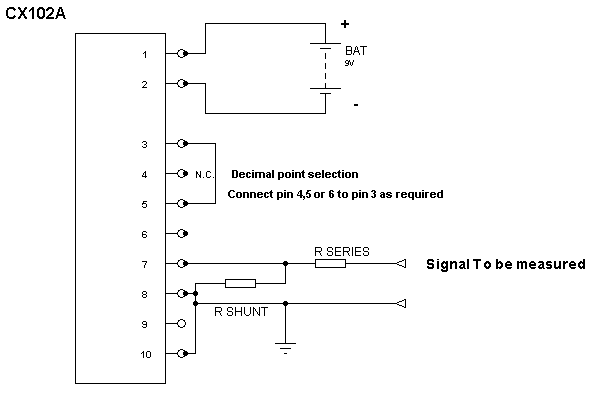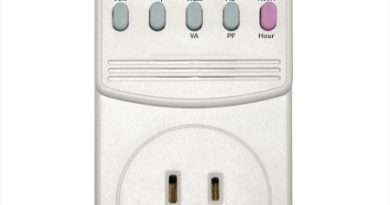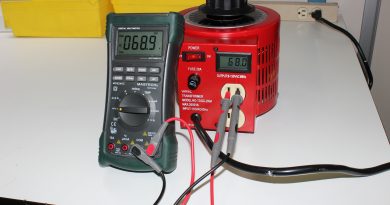How to use a Digital Panel Meter
While a digital panel meter can only accept a DC voltage input of 200mV, with a few modifications you can use one to measure many things, including higher voltages, AC and even current. All of these topics are covered in different articles. Today, how to use a digital panel meter to measure any voltage.
The CX102A Digital Panel Meter from Circuit Specialists is an easy to use DPM for any system where the power source and measured voltage do not share a common ground connection. This DPM can be used with the voltage divider PCB CX-ADD ON board, if desired. However, these instructions explain how to use this meter without the CX-ADD ON board. The application is for a 0-20 volt DC meter powered by an external 9 volt battery.
Like all Digital Panel Meters, the full scale range of this DPM is 200 mv full-scale. The basic connection is shown in the drawing below. If other full scale voltage ranges are desired, suitable voltage divider resistors are required. We will describe how to calculate these values and provide a table for easy reference. The connection diagram is shown at the bottom of this article.
To keep the calculated values within a range that is readily obtainable, we will use 10 M ohms as the maximum series resistor value. We can then calculate the required shunt resistor for our voltage divider network using the following equations:
Vout/Vin=Rshunt/(Rseries + Shunt)
Rearranging this, we can solve for the required shunt resistor value. The results are tabulated below for full scale voltage values
of 2 Volts, 20 Volts, and 200 Volts.
Use Rseries = 10 M ohms for all three ranges.
So for our example of a 0-20 volt meter:
For 0-20 Volts, Rshunt= 101 K ohms (Use 100 K ohm)
And connect pin 3 to pin 5 (for proper decimal point display)
If other ranges are desired the following values would be used:
For 0-2 Volts, Rshunt= 1.111 Meg ohms (Use 1.1 M Ohm)
And connect pin 3 to pin 4 (for proper decimal point display)
For 0-200 Volts, Rshunt= 10.01 K ohms (use 10 K ohm)
And connect pin 3 to pin 6 (for proper decimal point display)
Note that the voltage value displayed on the meter can be fine-tuned by adjusting the trimmer potentiometer on the back of the DPM. Obviously if 200 mV full scale is desired, Rshunt would not be used and Rseries would be replaced by a direct connection to pin 7 with the Ground of the voltage being measured connected to pin 8. Pin 3 would be connected to pin 6 for correct decimal point display.
It’s not especially difficult determine resistor values required to utilize the CX102A Digital Panel Meter for various voltage ranges.
Note that pins 3 & 5 are shorted together and pins 8 & 10 are shorted together and connected to the Ground connection of the voltage that is being measured. This Ground connection cannot be connected to the 9 v battery Negative terminal. Rshunt will be connected across pins 7 & 8 and Rseries will have one end connected to pin 7 and the other end to the voltage that is being measured.


